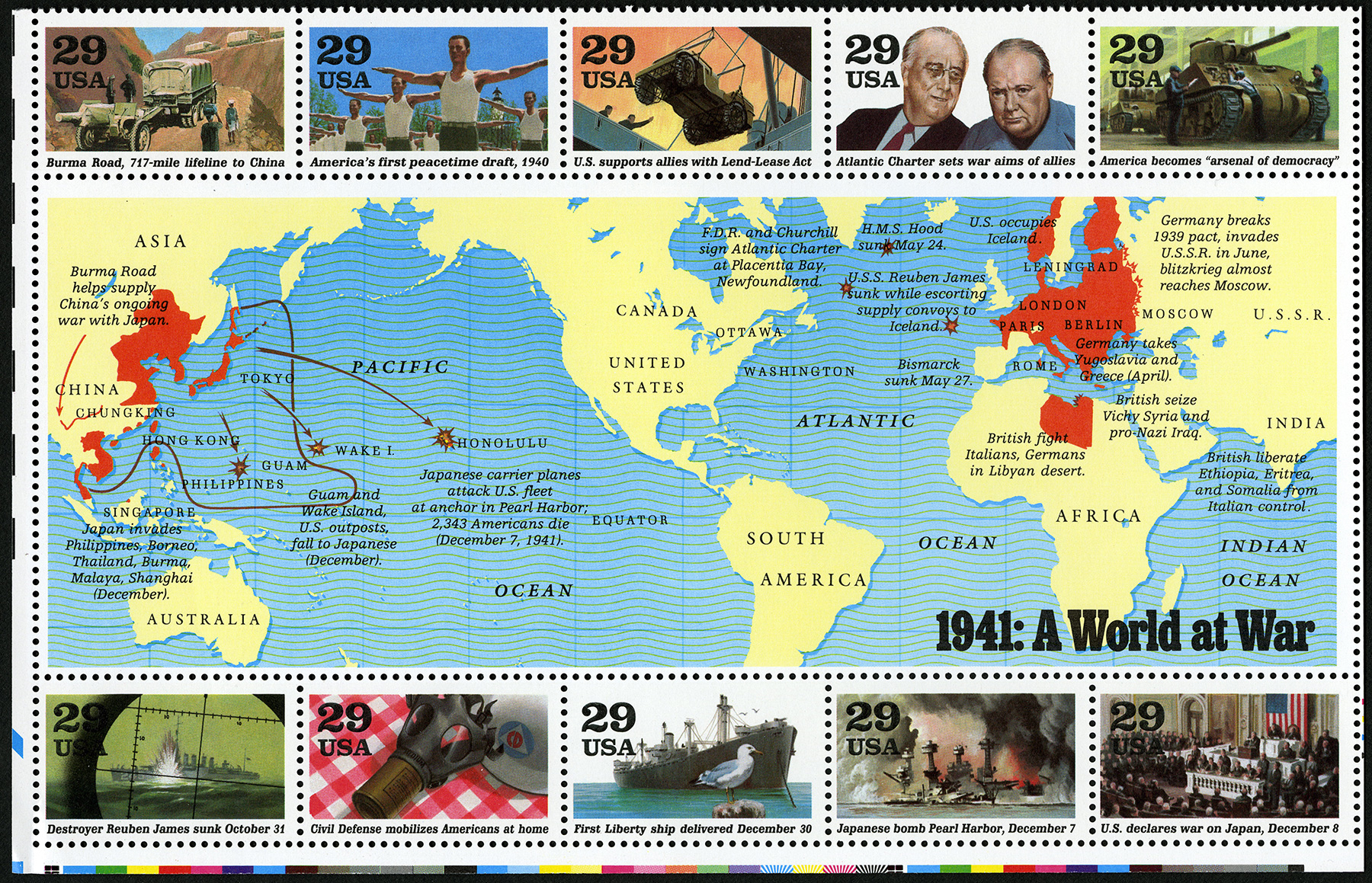
Courtesy Library of Congress
Sun Yat-sen, the founding father of the Republic of China, was briefly its provisional president as head of the ruling Guomindang party. In 1927, civil war erupted between the nationalist Guomindang, under Chiang Kai-shek, and the Chinese Communist Party. Both sides united against Japan in the mid-1930s, but after World War II, they fought again. By 1949, Communists controlled China. The Guomindang retreated to Taiwan.
Commerce and the amount of mail increased between China and the U.S. from 1911 to 1949. Airmail shortened delivery times, bringing them closer together. China and America were key allies in World War II.
5c Chinese Resistance die proof, 1942

Loan courtesy United States Postal Service, Postmaster General’s Collection
4c Sun Yat-sen die proof, 1961
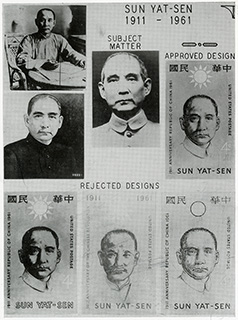
Sun Yat-sen, founding father of the Republic of China, appears with Abraham Lincoln on a 1942 stamp. Sun Yat-sen studied and lived abroad. His Three Principles (nationalism, democracy, and people's livelihood) reflect a concept he admired from Lincoln's Gettysburg Address: "of the people, by the people, and for the people."
The design for the 4c Sun Yat-sen stamp underwent many small changes.

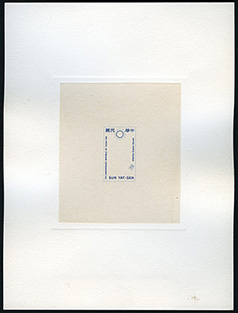
Loan courtesy United States Postal Service Postmaster General’s Collection
Blog post: Sun Yat-sen on U.S. Postage Stamps »
As leaders and governments shifted during the early years of the republic before World War II, commercial and education-related exchanges increased between China and the United States. American consulates and the Chinese postal service handled the mail.
British-American Tobacco Co., Shanghai, to U.S. Secretary of Agriculture cover, 1912
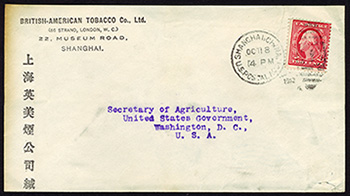
American Consular Service in Tianjin (Tientsin) cover, China, 1918
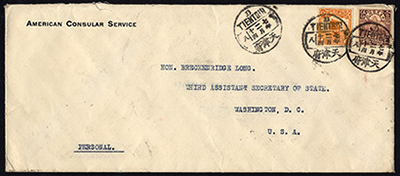
Nankai University, Tianjin (Tientsin), to mathematician Oswald Veblen, Princeton University cover, China, c. 1925
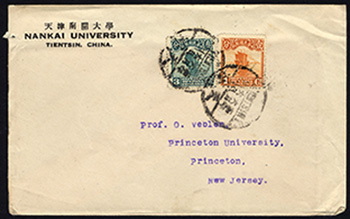
Peking Red Cross Hospital in Beijing to Minnesota registered cover, China, 1927

Bank notification “Holding Mail" for customer postal card, China, 1928
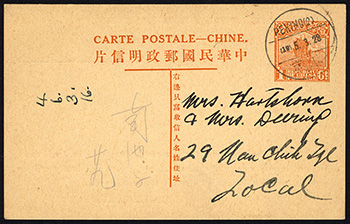

College of Agriculture, National Sun Yat-sen University, to New York cover, Hong Kong, 1941

“Shanghai China” surcharge postal announcement, 1919
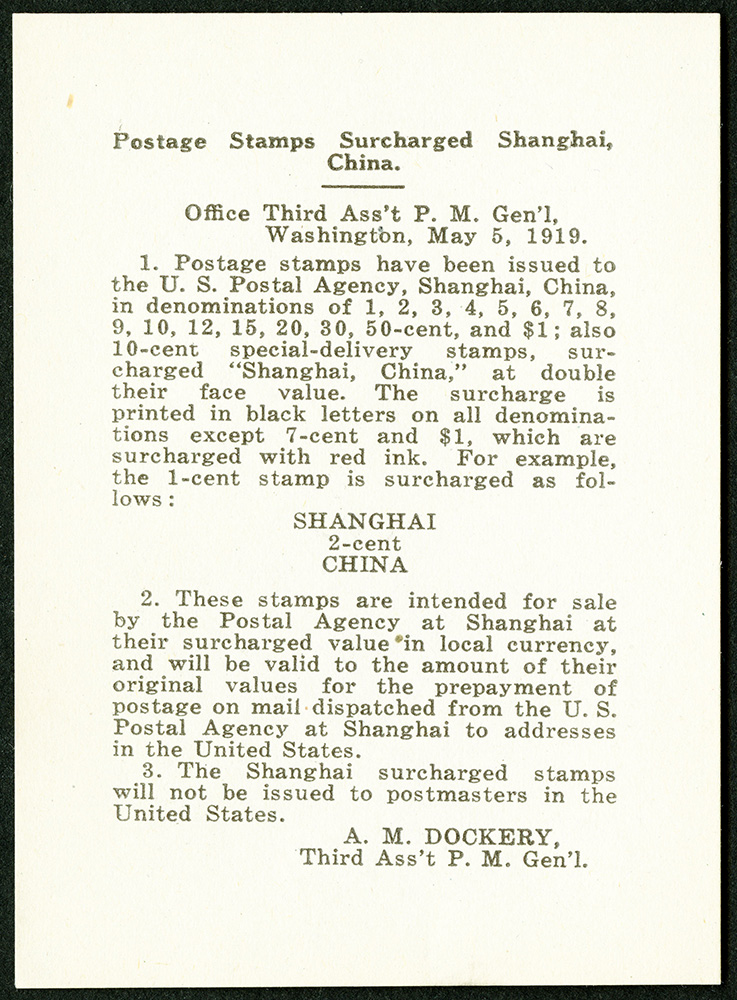
Beginning in 1919, the U.S. Post Office sold sixteen types of stamps surcharged for use by its Shanghai postal agency. (A "surcharged" stamp is overprinted with a different value.) The surcharge was double the original face value, reflecting the price of the stamps in Chinese currency.
6c on 3c “Shanghai China” overprint block of four, 1919
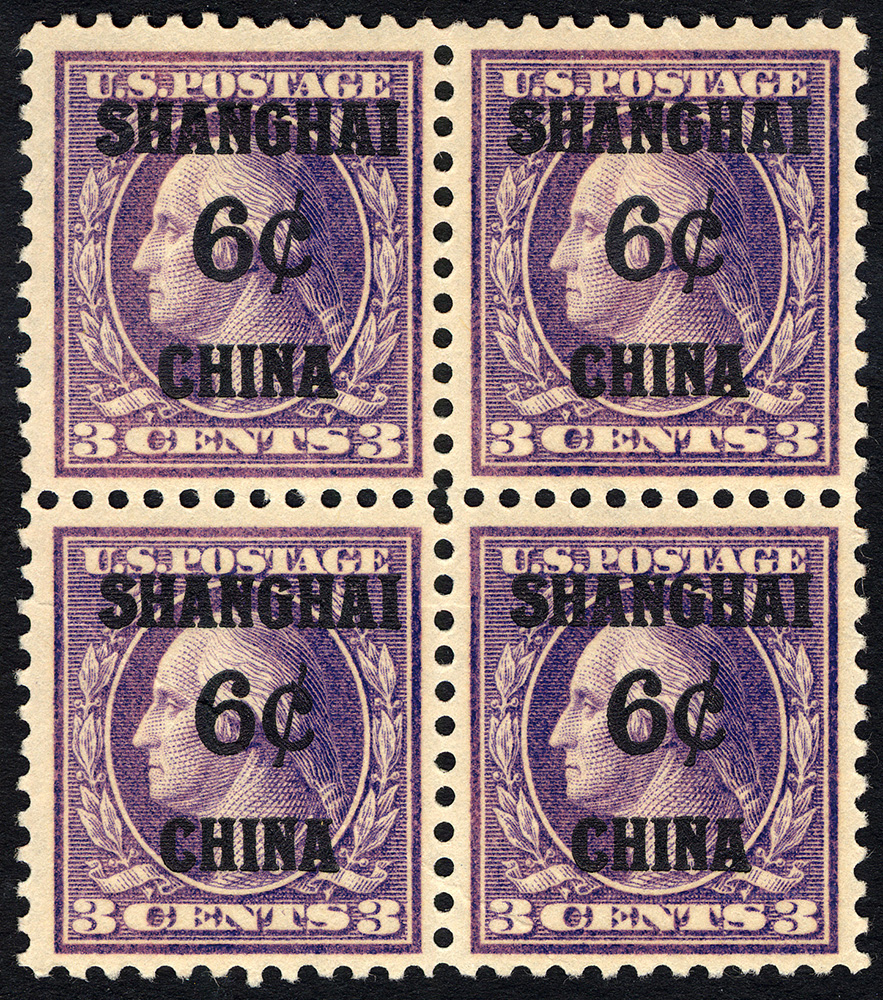
24c on 12c “Shanghai China” overprint on registered cover, 1919
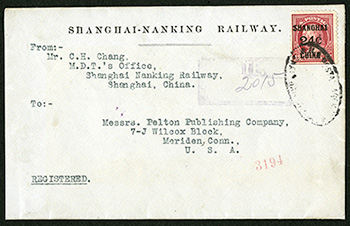
Loan courtesy Al Kugel
25c China Clipper approved die proof, 1935
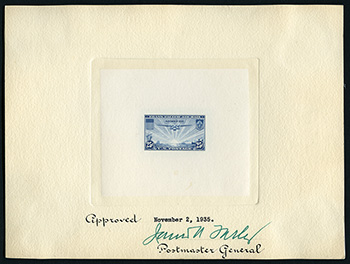
In 1937, Pan American's round-trip flights from the U.S. to the Asian mainland and back closed the final aerial gap in world airmail service. From Hong Kong, the China National Aviation Corporation provided service to 21 Chinese cities. Pan Am held a 45 percent stake in CNAC, an early U.S.-Chinese collaboration.
Round the World via Hong Kong first flight cover to U.S. Postmaster General, Netherlands, Straits Settlements, Brazil, 1937

Loan courtesy United States Postal Service, Postmaster General’s Collection
China to United States first flight cover to Juan Trippe (Pan American), China, 1937

Emperor Henry Puyi on postcard, Manchukuo, 1934

In the 1930s, Japan occupied Taiwan and northern China, setting up a puppet government in 1932 in Manchuria, which it renamed Manchukuo. War broke out with China in 1937 as Japan continued to advance. Chinese forces evacuated Japanese-occupied Shanghai, where U.S. Marines remained in the foreign sector.
U.S. Marines during Shanghai evacuation, “no postage available” cover, 1937

Occupied Formosa (Taiwan) cover, Japan, 1931
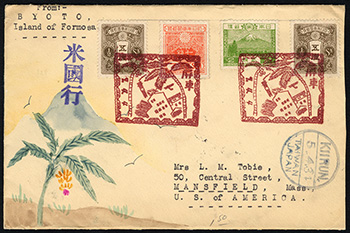
American Consulate in Shenyang (Mukden) cover, Manchukuo, 1933

Anniversary of the U.S. Constitution stamp on cover, China, 1939
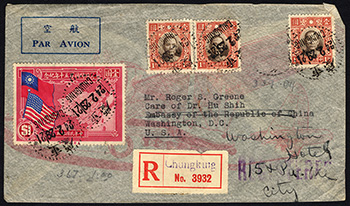
Joining with China as wartime allies, the United States and Great Britain gave up their extraterritorial rights, imposed by treaties a century earlier. The New Equal Treaties stamps celebrate this change. An earlier Chinese stamp honored the U.S. constitution; its Chinese map includes the former Manchuria, despite Japan's occupation.
Equal Treaties with George Washington rejected essay, China, 1945

Loan courtesy Michael Rogers
New Equal Treaties set of six on cover, China, 1945
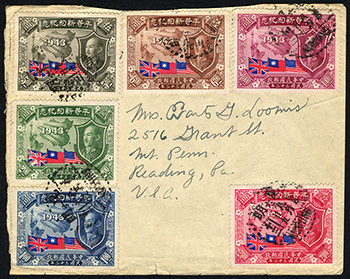
World War II with Burma Road pane, 1991
With the U.S. entry into World War II in December 1941, Chinese and American cooperation intensified. Commemorative U.S. stamps recognize General Joseph "Joe" Stilwell, the senior American military commander in the China-Burma-India theater, and General Claire Chennault, whose daring pilots helped to supply Chinese troops and protected the Burma Road.
Gen. Joseph W. Stilwell first day cover, 2000

Claire Lee Chennault first day cover, 1990
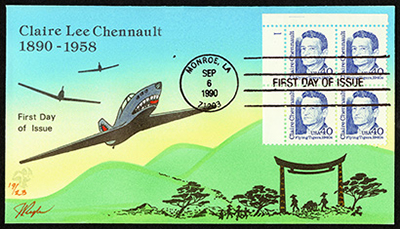
Nanjing (Nanking) Japanese POW camp cover, 1946

Generalissimo Chiang Kai-shek Headquarters in Nanjing (Nanking) during Chinese civil war cover, China, 1947

Coca-Cola and China »
Chiang Kai-shek after retreat to Taiwan cover, China (Taiwan), 1953

After World War II, civil war resumed in China. Mao Zedong's Communists defeated Chiang Kai-shek's nationalist forces, the Guomindang, on the Chinese mainland. Retreating to Taiwan, the nationalist party continued to issue stamps.
Chiang Kai-shek autographed imperforate block of eight, China (Taiwan), 1952


